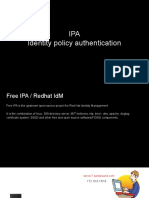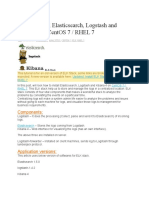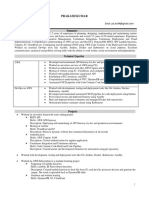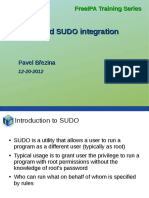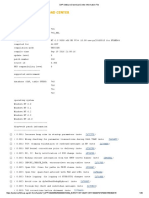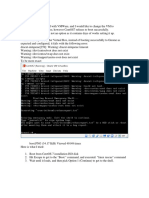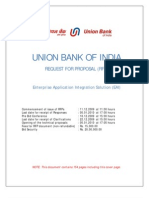0% found this document useful (0 votes)
226 views13 pagesRed Hat Identity Management Guide
The document provides instructions for setting up user accounts and hosts on an IPA server. It includes steps to install and configure IPA and DNS, add users and hosts to IPA, set up firewall rules, join an IPA client, and verify the installation. Key steps are to install IPA and BIND packages, run ipa-server-install to configure IPA, add the DNS forwarders, enable required services on the firewall, add users and hosts to IPA, and join an IPA client using ipa-client-install or authconfig. Logs and certificates are also checked to verify a successful installation.
Uploaded by
Sri WasteCopyright
© © All Rights Reserved
We take content rights seriously. If you suspect this is your content, claim it here.
Available Formats
Download as DOCX, PDF, TXT or read online on Scribd
0% found this document useful (0 votes)
226 views13 pagesRed Hat Identity Management Guide
The document provides instructions for setting up user accounts and hosts on an IPA server. It includes steps to install and configure IPA and DNS, add users and hosts to IPA, set up firewall rules, join an IPA client, and verify the installation. Key steps are to install IPA and BIND packages, run ipa-server-install to configure IPA, add the DNS forwarders, enable required services on the firewall, add users and hosts to IPA, and join an IPA client using ipa-client-install or authconfig. Logs and certificates are also checked to verify a successful installation.
Uploaded by
Sri WasteCopyright
© © All Rights Reserved
We take content rights seriously. If you suspect this is your content, claim it here.
Available Formats
Download as DOCX, PDF, TXT or read online on Scribd
/ 13




